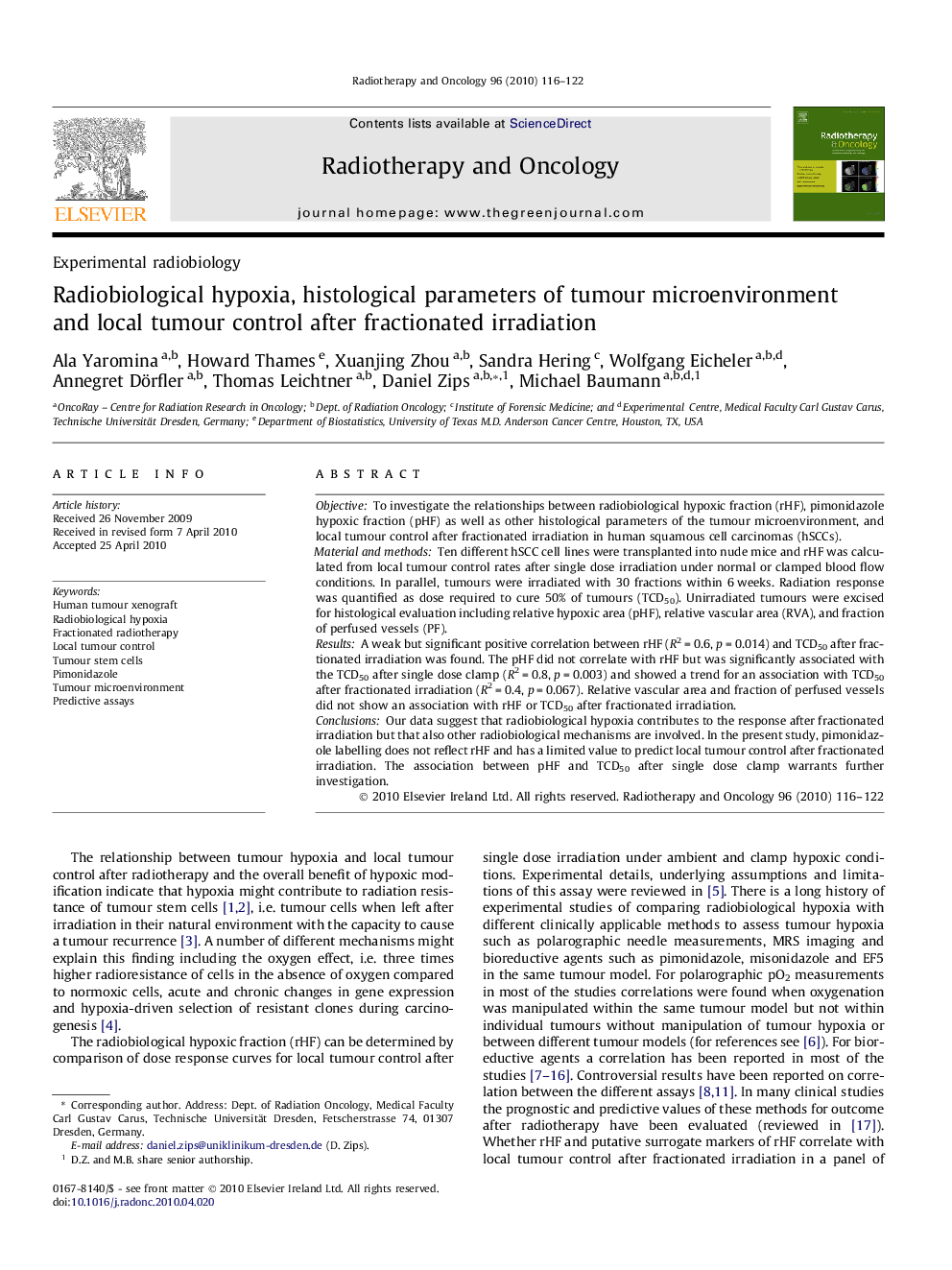| Article ID | Journal | Published Year | Pages | File Type |
|---|---|---|---|---|
| 2158985 | Radiotherapy and Oncology | 2010 | 7 Pages |
ObjectiveTo investigate the relationships between radiobiological hypoxic fraction (rHF), pimonidazole hypoxic fraction (pHF) as well as other histological parameters of the tumour microenvironment, and local tumour control after fractionated irradiation in human squamous cell carcinomas (hSCCs).Material and methodsTen different hSCC cell lines were transplanted into nude mice and rHF was calculated from local tumour control rates after single dose irradiation under normal or clamped blood flow conditions. In parallel, tumours were irradiated with 30 fractions within 6 weeks. Radiation response was quantified as dose required to cure 50% of tumours (TCD50). Unirradiated tumours were excised for histological evaluation including relative hypoxic area (pHF), relative vascular area (RVA), and fraction of perfused vessels (PF).ResultsA weak but significant positive correlation between rHF (R2 = 0.6, p = 0.014) and TCD50 after fractionated irradiation was found. The pHF did not correlate with rHF but was significantly associated with the TCD50 after single dose clamp (R2 = 0.8, p = 0.003) and showed a trend for an association with TCD50 after fractionated irradiation (R2 = 0.4, p = 0.067). Relative vascular area and fraction of perfused vessels did not show an association with rHF or TCD50 after fractionated irradiation.ConclusionsOur data suggest that radiobiological hypoxia contributes to the response after fractionated irradiation but that also other radiobiological mechanisms are involved. In the present study, pimonidazole labelling does not reflect rHF and has a limited value to predict local tumour control after fractionated irradiation. The association between pHF and TCD50 after single dose clamp warrants further investigation.
